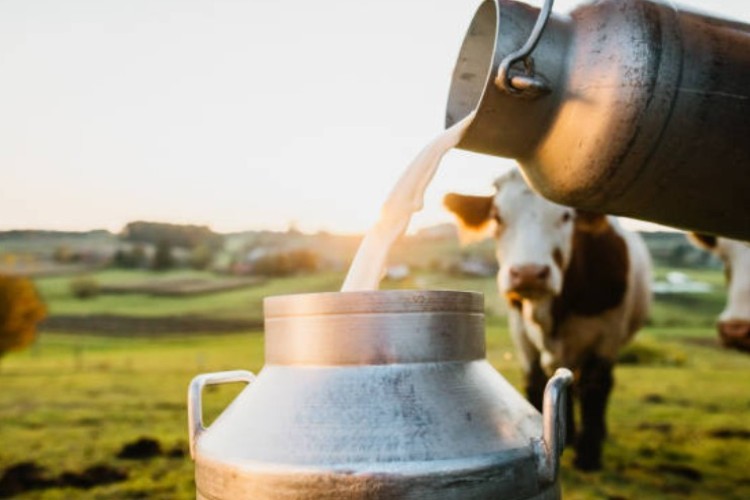
Dairy industry and India’s trade deals: India has signed a number of free trade agreements with partners such as the United Kingdom, Australia, and the United Arab Emirates. Negotiations with others are underway. Yet, agriculture and dairy remain the sticking points. In November 2019, India walked out of the Regional Comprehensive Economic Partnership (RCEP) talks, citing unresolved concerns from these sectors. Five years later, the same hurdles are slowing progress on an interim trade deal with the United States.
India is the world’s largest milk producer, accounting for a quarter of global output. Successive governments have shielded farmers and cooperatives, arguing that the sector is highly unorganised and labour-intensive. This is true for liquid milk and skimmed milk powder, where more than half the surplus comes from unorganised players. But building a wall around every dairy line is counter-productive. It prevents India from tapping opportunities in processed and premium dairy products where global firms can add value.
READ | India could turn H-1B visa restrictions to its advantage
Dairy industry and political economy
India’s dairy policy cannot be understood without its political economy. The cooperative movement, led by Amul and the National Dairy Development Board, transformed rural livelihoods and created powerful lobbies that shape trade negotiations.
Dairy farmers are spread across politically sensitive states such as Gujarat, Maharashtra, and Uttar Pradesh, making them an electoral constituency no government dares to alienate. Any concession on dairy imports is therefore viewed through the lens of farmer protests and cooperative pressure, which explains New Delhi’s defensive stance in both RCEP and bilateral talks.
Changing Consumption Patterns
Urbanisation and post-Covid health consciousness have reshaped Indian diets. Rising incomes, e-commerce, food delivery, and nudges like FSSAI’s Eat Right India campaign have boosted demand for branded and consistent products. Value-added dairy—cheese, Greek yogurt, whey—has been growing at double-digit rates, far outpacing liquid milk.
In FY23, cheese and yogurt grew 18-22 per cent in volume against 8-10 per cent for milk. That signals a clear trade-up in urban demand which global dairy players are well-placed to serve, without hurting traditional milk supplies.
Selective Opening, Not Blanket Access
A calibrated opening for premium and processed dairy could widen consumer choice and improve quality while leaving farm-gate milk prices untouched. Sensitive commodities—liquid milk, skimmed milk powder, and bulk products—should remain shielded by tariffs and safeguards. But products like mozzarella, cheddar, gouda, probiotic yogurt, protein shakes, and whey isolates can be opened selectively.
These complement raw milk procurement and support downstream industries such as bakeries, nutrition brands, and ready-meal firms. In return, India should seek recognition for its nutraceutical exports and secure technical cooperation on cold chains, testing, and residue monitoring.
There is also the global context to consider. The United States and the European Union protect their dairy farmers with generous subsidies, distorting international prices and making Indian producers wary of cheap imports. India has often raised these issues at the World Trade Organisation, arguing that a level playing field does not exist in agriculture. Without credible reforms to subsidy regimes in advanced economies, India’s resistance to opening its dairy market is not mere protectionism but a response to systemic inequities in global trade.
Why Re-Engagement Now
Six years after exiting RCEP, India’s consumer base, logistics, and standards have changed. RCEP members offer strengths that match India’s gaps: Australia and New Zealand in milk ingredients, Japan and Korea in fermented dairy, and the US in cheese and whey. India already imports significant quantities—about 80,000 tonnes of lactose in 2025, with the US supplying 13 per cent, and over a fifth of whey proteins.
These inputs are critical for processed dairy and remain costly under current 40 per cent tariffs and veterinary certification rules introduced in late 2024. Negotiated access could stabilise supplies, cut costs, and raise quality.
With the US, India could offer limited tariff-rate quotas on premium lines and dairy inputs, tied to strict origin rules and certification standards. With RCEP, India could move beyond observer status into structured cooperation on logistics, testing, and ingredient sourcing. The real gain lies in using trade to plug bottlenecks in technology and inputs, while keeping politically sensitive products out of reach.
A selective opening will not dismantle protections for village dairies but will allow India to build a premium dairy ecosystem at home. By giving consumers better products and industries reliable inputs, India can marry domestic priorities with global integration. The choice is between remaining defensive or using trade to drive quality, scale, and competitiveness in a sector that sustains rural incomes while feeding urban aspirations.
Krishan Sharma teaches Economics at Bennett University. Nida Rahman is an economist with expertise in the area of international trade and investment.
